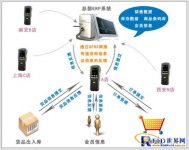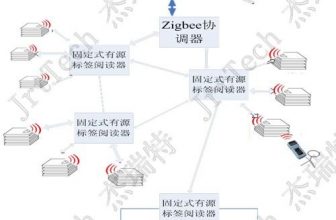
RFID handheld terminal chain store operation management system
[ad_1]
1. Analysis of the status quo of chain store operation and management
Under the growing trend of chain operation development, there are various inconveniences in the process of store operation and management. The following analyzes the sales management, goods management and inventory counting, and leads the managers to find out the problems.
1) Cargo management
Including receiving management, order management, return management and commodity management. It is mainly used in order submission, goods arrival and storage, on-shelf sales, commodity inquiry, return service, commodity cost calculation, etc. Traditional manual records are time-consuming, laborious, and inconvenient to save and query. So, how do we simplify this process through new means? This will become an urgent problem for more managers.
2) Sales management
Including the management of product sales and membership management related to sales, etc. The first is the application in the entry, reading, and modification of basic information such as the product itself, classification, details, price, current sales status, whether to discount or not, and the price after the discount. The second is the membership card and member information. manage. So, how to make the operator save the trouble of running back and forth between the shelf and the computer? How to not read the mountain of information? These are all questions worth thinking about.
3) Inventory inventory
It mainly includes two aspects: inventory management and inventory management. If a process is formed by some means to link the front-end sales information with the inventory management, so that the back-end database is constantly updated, then a large number of forms, reports, and a large amount of manpower can be discarded, which improves Work efficiency also ensures the accuracy of information. The result of this is that the inventory work performed once a week or even a month can be shortened to only tens of minutes a day. It is also helpful for managers to regularly understand the operating conditions, so as to continuously revise their operating policies, which greatly promotes development and reduces operating risks and losses.
From the above analysis, it can be seen that how to simplify the work process has become a common problem in the operation and management of chain stores. Driven by this problem, through the intervention of RFID handheld terminals, combined with the use of our company’s products, performance characteristics, etc., a reasonable solution is given. How to lead the managers out of the tedious working environment has become the proposed solution The ultimate goal.
2. The impact of the intervention of RFID handheld terminals on the convenience of management
According to the analysis, we found that in the entire operation and management process, how to deal with the tedious work more effectively, conveniently and conveniently? How to achieve a better state of operation and development at a lower cost? How to give managers, operators and The greater convenience brought by the three customers has become the most important issue. The infiltration of RFID handheld terminals into the chain store industry has gradually made the problem more convenient and clear. We give a detailed description of several typical aspects of management to help our managers solve more common problems.
1. System flow based on the use of RFID handheld terminals

[Figure 1]Chain store operation management system
As shown in Figure 1, the operation and management of chain stores is the process of information submission and feedback. In the process of information interaction, the purchase, sale, and inventory management of goods and the information management of members are completed. Abandon manual entry, manual recording, manual sorting, and adopt electronic media for operation, which greatly improves work efficiency and accuracy of operation.
Take the management of purchase, sale, and inventory as an example:
1) When the goods are in the warehouse, use the handheld to read the barcode or RFID tag attached to the goods, and transmit the goods information to the back-end database.
2) Before the item is sold, you can check the detailed information of the item through the bar code or label attached to the item, including the remaining quantity in the warehouse, the item’s price, model, and whether it is discounted or not.
3) When the item is sold, through the operation of the product, a product order is generated, submitted to the back-end database, and the back-end database responds to it, updates the product information, and feeds back the order acceptance.
4) After the order is settled, the background database will re-update the product information. Ensure the balance of sales and inventory.
5) During daily inventory, you only need to read the information of the goods and send it back to the database system to get feedback information on inventory and sales.
2. The main functions of the system based on RFID handheld terminals
1) Invoicing management function:
① Commodity management:
The store receives the goods distributed by the superior unit, and manages the return of the goods on and off the shelves, and must also handle the various types of goods out of the warehouse.
a) For the goods sent by the supplier, the inspector can check the item code, quantity, production place, variety, specification, packaging time, shelf life and other information one by one through the RFID handheld terminal in the receiving area. After obtaining the information, upload the database, and the obtained information is saved in the background database.
b) By deploying wireless networks throughout the store,RFIDThe staff of the handheld terminal can check the specific location and space status of the items on the shelf at any time, and check the storage status, space size and sales volume of the goods sold quickly through daily sampling inventory, and record it to the system The storage area, capacity, volume and equipment limits, etc., can use historical data to analyze and use the cargo space more effectively, so that the space utilization rate, the quantity of goods purchased, and the placement of goods can be adapted to sales to the greatest extent.
In general, through the use of RFID handheld terminals, attached to bar codes, RFID technology can quickly and accurately perform the following operations in product management: product information management: you can read and enter and modify product information; product organization management: used Manage the quantity and gross profit of each category of goods; position management: used to manage the shelf positions of the goods; rack position management: including new products on the shelves, shelf adjustments, shelf merging, etc.; commodity status changes: used to Set the status of “available for sale” and “discontinued sale” of commodities; also manage the price of commodities: manage historical price changes, on-sale pricing, promotional pricing, reduced-price sales and other prices.
② Cargo inventory management:
Various inventory methods such as whole-store inventory and partition inventory can be performed to generate related profit and loss reports, and timely return to the central database to ensure the accuracy and standardization of management, and provide a basic basis for the headquarters to grasp the accurate data of the large inventory of goods in each store.
Inventory is a daily task for the operation of a store. Through the inventory, the latest inventory situation can be grasped, and abnormal inventory loss can be found in time. In order to improve the efficiency of inventory, RFID handheld terminals can be introduced for inventory work. Including: input of inventory data: input the type and quantity of inventory; submission of inventory results: interact with the system, upload the inventory results to the database, and update the background data.
2) Member management function:
Membership management is mainly achieved through the management of membership cards. You can use handheld or desktop devices to read, write, and other operations on the member’s card to interact with the background system.
1. To classify members, members can be divided into multiple categories according to the actual situation of the company, such as: gold card members, silver card members, etc.;
2. Perform member card issuance and recharge, conduct data registration management for members, classify member categories, issue membership cards, and recharge;
3. Members can use the membership card for consumption, and members can set up membership category discounts for card consumption;
4. Regular analysis of member information: mainly for members’ consumption, analysis of members’ activities, points, point redemption, birthday reminders, etc.;
5. Upgrade members: The system can set membership upgrade conditions, and members can upgrade to a higher membership level after meeting the conditions.
In view of the above description, RFIDHandheld TerminalThe basic functions that should be possessed should include reading barcode information, reading and writing standard protocol cards, tags, etc. (such as ISO14443/15693, etc.); it can also have data output functions such as GPRS, 433 (or Bluetooth), and WiFi, which is convenient for long-distance operate.
3. The role of RFID handheld terminals in the entire operation and management
RFID handheld terminal is mainly used as a tool for data collection and data interaction in chain store operation and management. By reading barcode/RFID tag information, information is transmitted and fed back between the foreground and the background database.
Applications can be divided into two parts. One is the warehouse side of the logistics support application, which carries out purchase and inventory management. The main purpose is to improve the efficiency of incoming goods acceptance and the visibility of correct inventory; the second is the store side of the customer service application. Carrying out customer service and sales, the purpose is to improve customer relationship management and quickly check product history, anti-theft and promotion efficiency.
Specific functions include:
1) Digital remote management of chain store sales and orders
2) Headquarters can grasp the sales/order data of chain stores in various regions in real time
3) Dynamically understand the front-end sales status of chain stores to facilitate decision-making
4) Each chain store realizes membership management and employee management
[ad_2]




